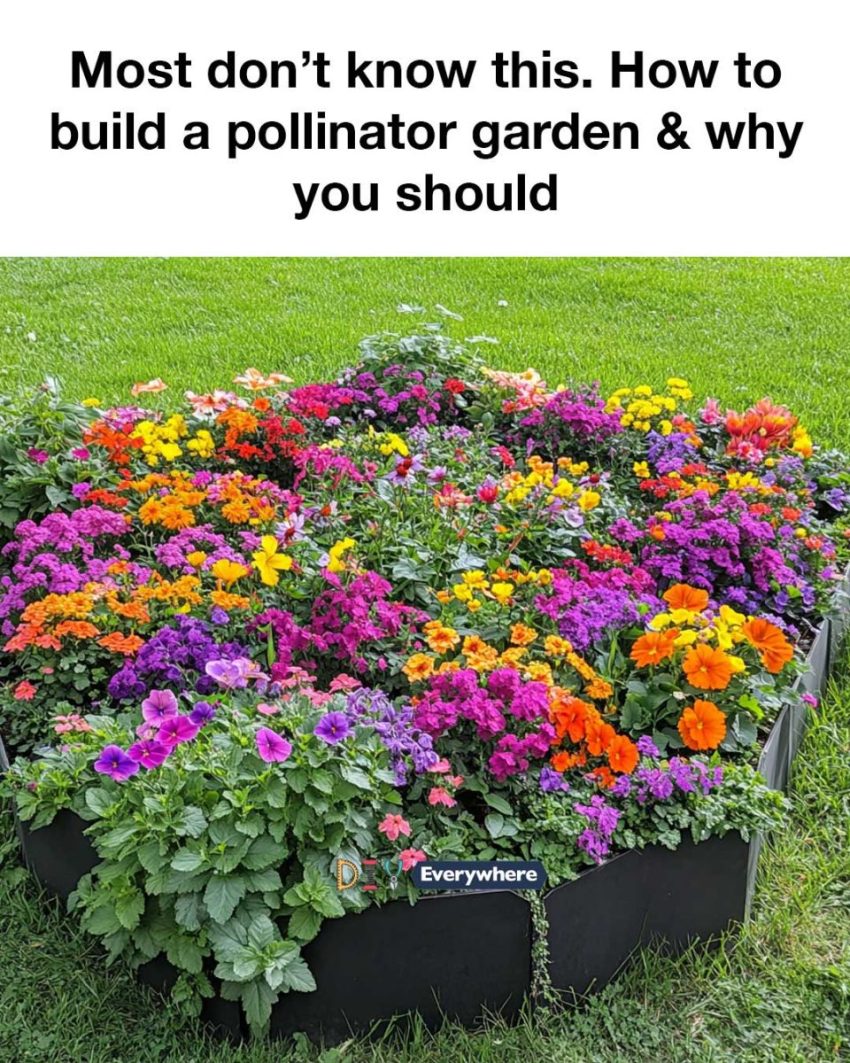ADVERTISEMENT
Selecting the Ideal Location for Your Pollinator Garden
Choosing the right location for your pollinator garden is crucial for its success. Look for a spot that receives at least 6 hours of sunlight per day, as most pollinator-friendly plants thrive in full sun. Ensure the area is sheltered from strong winds, which can deter pollinators. Additionally, consider proximity to a water source, as pollinators need water to survive. Avoid areas with heavy foot traffic or where pesticides are frequently used.
Gathering Essential Materials and Tools
To build your pollinator garden, you’ll need a variety of materials and tools. Start with quality soil, compost, and mulch to create a healthy growing environment. You’ll also need seeds or seedlings of native plants that attract pollinators. Essential tools include a shovel, trowel, rake, and watering can or hose. Consider adding features like rocks or logs for shelter and a shallow water dish for hydration. Finally, plan for signage to educate visitors about the importance of pollinators.
Step 1: Planning Your Pollinator Garden Layout
Begin by sketching a layout of your garden, taking into account the size and shape of the area. Group plants with similar sunlight and water needs together, and arrange them in layers, with taller plants at the back and shorter ones at the front. This not only creates an aesthetically pleasing design but also maximizes space and resources. Consider pathways for easy access and maintenance, and leave open spaces for pollinators to move freely.
Step 2: Building the Raised Bed Structure
If you’re using raised beds, construct them using untreated wood, bricks, or stones to avoid harmful chemicals. Raised beds offer better drainage and soil quality, which are beneficial for plant growth. Ensure the beds are at least 12 inches deep to accommodate root systems. Position the beds according to your layout plan, leaving enough space between them for easy access and air circulation.
Step 3: Preparing the Soil for Optimal Growth
Healthy soil is the foundation of a successful pollinator garden. Begin by removing any weeds or debris from the area. Loosen the soil with a shovel or tiller to improve aeration and drainage. Mix in organic compost to enrich the soil with nutrients and improve its structure. Test the soil pH and adjust it if necessary to suit the plants you intend to grow. A pH between 6.0 and 7.0 is ideal for most pollinator-friendly plants.
Step 4: Choosing the Right Plants for Pollinators
Select a diverse range of native plants that bloom at different times throughout the growing season to provide a continuous food source for pollinators. Include a mix of flowers with various colors, shapes, and sizes to attract different species. Consider plants like milkweed, coneflowers, and bee balm, which are known to attract bees and butterflies. Avoid hybrid plants that may lack nectar or pollen.
Step 5: Planting Techniques and Tips
When planting, follow the spacing recommendations for each plant to ensure they have room to grow. Dig holes that are twice the width of the root ball and just as deep. Gently remove plants from their containers, loosen the roots, and place them in the holes. Backfill with soil and water thoroughly to eliminate air pockets. Apply a layer of mulch around the plants to retain moisture and suppress weeds.
Step 6: Maintaining Your Pollinator Garden
Regular maintenance is key to a thriving pollinator garden. Water plants deeply but infrequently to encourage deep root growth. Remove weeds regularly to reduce competition for resources. Deadhead spent flowers to promote further blooming and prevent unwanted reseeding. Monitor for pests and diseases, and use organic methods to manage them. Periodically add compost to replenish soil nutrients.
Step 7: Monitoring and Supporting Pollinator Activity
Observe your garden regularly to see which pollinators visit and which plants they prefer. Keep a journal to track blooming times and pollinator activity. Provide additional support by installing bee hotels or butterfly houses. Avoid using pesticides, as they can harm pollinators. Encourage neighbors to create pollinator-friendly spaces to expand the habitat network.
Benefits of Having a Pollinator Garden
Pollinator gardens offer numerous benefits beyond supporting pollinators. They enhance biodiversity, improve air and soil quality, and contribute to the beauty of your landscape. These gardens also provide educational opportunities for communities to learn about the importance of pollinators and sustainable gardening practices. Additionally, they can increase property value and provide a sense of well-being and connection to nature.
Conclusion: Encouraging Biodiversity and Sustainability
Building a pollinator garden is a rewarding endeavor that contributes to the health of our planet. By creating a haven for pollinators, you play a vital role in promoting biodiversity and sustainability. Your garden becomes part of a larger effort to protect these essential creatures and the ecosystems they support. We encourage you to share your knowledge and inspire others to join the movement, creating a network of pollinator-friendly spaces that benefit both nature and humanity.


